Yoho National Park
- January 3, 2024
- 0 comment
A Natural Wonderland Unveiled
Welcome to the captivating world of Yoho National Park, a haven for nature lovers and adventure seekers alike. As we delve into the scenic landscapes and rich biodiversity of this Canadian gem, get ready to embark on a virtual journey through its history, natural wonders, and outdoor marvels.
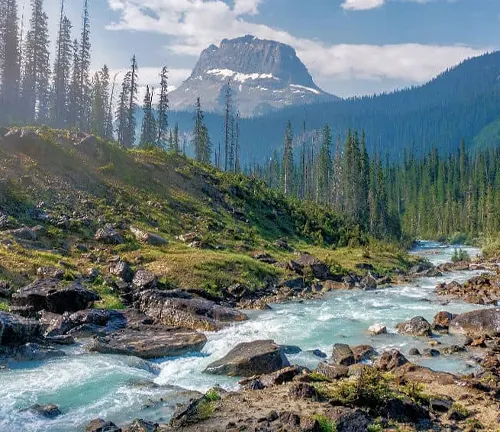
History of Yoho National Park
Established in 1886, Yoho National Park holds a special place in Canada’s natural heritage. From its early days as a part of the Canadian Pacific Railway’s route to becoming a UNESCO World Heritage Site in 1984, the park has a compelling history filled with milestones and developments.
- Railway Connection:
- Yoho National Park owes its early exploration to the construction of the Canadian Pacific Railway. The railway played a significant role in opening up the region to the rest of Canada and the world.
- Yoho National Park owes its early exploration to the construction of the Canadian Pacific Railway. The railway played a significant role in opening up the region to the rest of Canada and the world.
- Establishment:
- The park was officially established on October 10, 1886, making it one of Canada’s oldest national parks. Its creation was part of a broader initiative to protect and preserve the stunning natural landscapes of the Canadian Rockies.
- The park was officially established on October 10, 1886, making it one of Canada’s oldest national parks. Its creation was part of a broader initiative to protect and preserve the stunning natural landscapes of the Canadian Rockies.
- Naming Origin:
- The name “Yoho” is derived from the Indigenous Cree language and is an expression of awe and wonder. This choice reflects the park’s breathtaking scenery and the emotions it evokes.
- The name “Yoho” is derived from the Indigenous Cree language and is an expression of awe and wonder. This choice reflects the park’s breathtaking scenery and the emotions it evokes.
- Early Explorers:
- In the late 19th and early 20th centuries, Yoho National Park attracted explorers, naturalists, and mountaineers eager to discover its beauty. Their accounts and documentation contributed to the park’s growing recognition.
- In the late 19th and early 20th centuries, Yoho National Park attracted explorers, naturalists, and mountaineers eager to discover its beauty. Their accounts and documentation contributed to the park’s growing recognition.
- Spiral Tunnels:
- A notable engineering feat within the park is the construction of the Spiral Tunnels, completed in the early 20th century. These tunnels allowed trains to navigate the challenging Kicking Horse Pass more safely.
- A notable engineering feat within the park is the construction of the Spiral Tunnels, completed in the early 20th century. These tunnels allowed trains to navigate the challenging Kicking Horse Pass more safely.
- UNESCO World Heritage Site:
- Yoho National Park gained international recognition in 1984 when it was designated a UNESCO World Heritage Site. This acknowledgment highlights the park’s outstanding universal value and its contribution to the Earth’s natural heritage.
- Yoho National Park gained international recognition in 1984 when it was designated a UNESCO World Heritage Site. This acknowledgment highlights the park’s outstanding universal value and its contribution to the Earth’s natural heritage.
- Burgess Shale Discovery:
- Yoho is also renowned for the discovery of the Burgess Shale fossil beds in 1909 by paleontologist Charles D. Walcott. The fossils found here provide invaluable insights into the Cambrian Explosion, a pivotal period in the history of life on Earth.
- Yoho is also renowned for the discovery of the Burgess Shale fossil beds in 1909 by paleontologist Charles D. Walcott. The fossils found here provide invaluable insights into the Cambrian Explosion, a pivotal period in the history of life on Earth.
- Cultural Heritage:
- The park has cultural significance for Indigenous peoples, including the Ktunaxa Nation and Secwepemc. Yoho National Park recognizes and respects the traditional connections Indigenous communities have to the land.
- The park has cultural significance for Indigenous peoples, including the Ktunaxa Nation and Secwepemc. Yoho National Park recognizes and respects the traditional connections Indigenous communities have to the land.
- Conservation and Stewardship:
- Over the years, Yoho National Park has been a focal point for conservation efforts. Various initiatives have been implemented to preserve its diverse ecosystems, ensuring that future generations can continue to enjoy its natural wonders.
- Over the years, Yoho National Park has been a focal point for conservation efforts. Various initiatives have been implemented to preserve its diverse ecosystems, ensuring that future generations can continue to enjoy its natural wonders.
- Recreational Development:
- As visitation increased, Yoho National Park evolved to offer a range of recreational opportunities, including hiking, camping, and wildlife viewing, making it a beloved destination for nature enthusiasts.
Breathtaking Landscapes
Yoho National Park is a visual feast, boasting diverse landscapes that range from towering mountain peaks to serene alpine meadows. The park is home to iconic features such as the stunning Takakkaw Falls and the dramatic Spiral Tunnels, offering visitors an immersive experience in nature’s grandeur.
Mountain Peaks
The park is home to towering mountain peaks, including the iconic Wapta Mountain and Mount Burgess. The rugged, snow-capped summits create a dramatic backdrop, especially during sunrise and sunset.
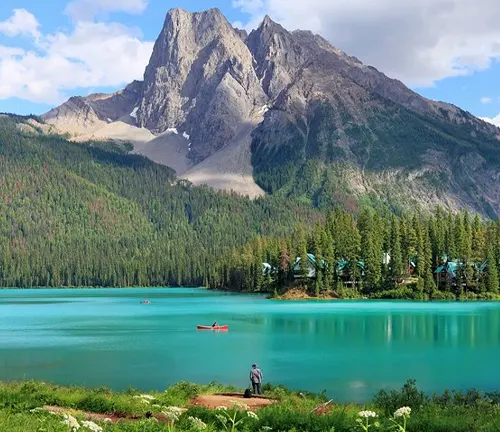
Takakkaw Falls
Cascading from a height of 1,250 feet, Takakkaw Falls is one of the highest waterfalls in Canada. The sheer force and beauty of the falls against the backdrop of the mountainous terrain make it a mesmerizing sight.
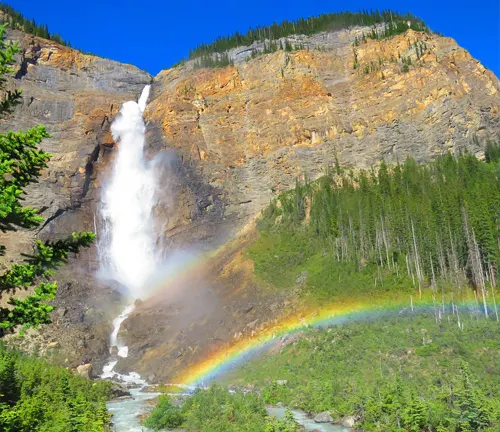
Emerald Lake
Nestled in the heart of Yoho, Emerald Lake is a pristine jewel surrounded by majestic mountains. The vibrant emerald color of the lake, fed by glacial runoff, adds to its enchanting appeal.
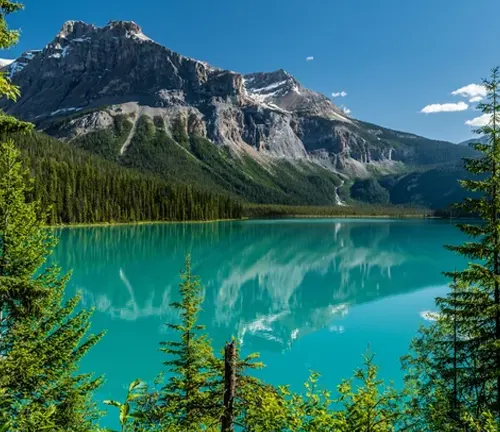
Spiral Tunnels Viewpoint
Offering a unique perspective, the Spiral Tunnels Viewpoint allows visitors to witness trains navigating through spiral tunnels carved into the mountainside. The engineering marvel complements the natural beauty of the surroundings.
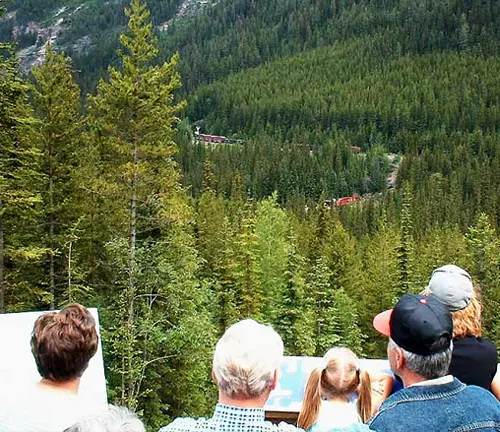
Iceline Trail Panoramas
Hiking the Iceline Trail provides panoramic views of the Yoho Valley and surrounding mountain ranges. The trail’s elevation rewards hikers with awe-inspiring vistas that showcase the park’s vast wilderness.
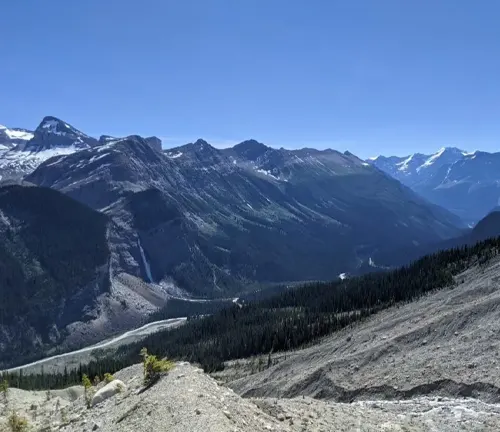
Lake O’Hara
Accessible by a bus or a challenging hike, Lake O’Hara is surrounded by alpine meadows and towering peaks. The pristine lake reflects the surrounding mountains, creating a picture-perfect setting.
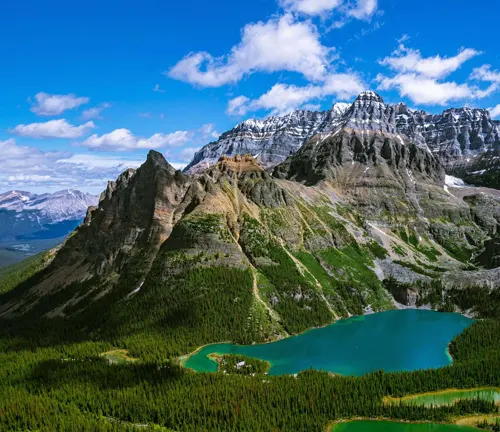
Natural Bridge
Formed by the powerful Kicking Horse River, the Natural Bridge is a unique rock formation that the river has carved over time. It’s a captivating spot that showcases the forces of nature at work.
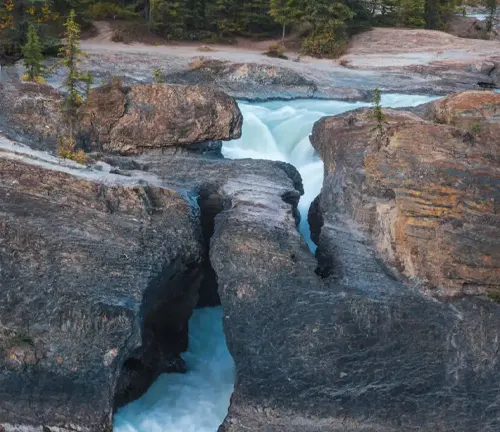
Yoho Valley
The Yoho Valley is a glacially carved masterpiece, featuring waterfalls, hanging glaciers, and lush greenery. The valley provides a serene escape into the heart of the Canadian Rockies.
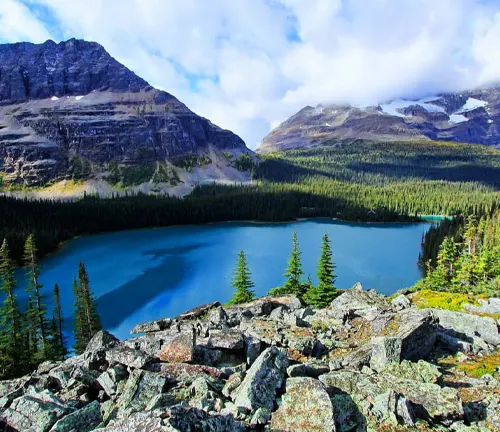
Burgess Shale Fossil Beds
While not a traditional landscape, the Burgess Shale fossil beds are a geological wonder. The site reveals fossils from the Cambrian Explosion, offering a glimpse into ancient marine life amid the mountainous terrain.

Twin Falls
Situated along the Yoho Valley Trail, Twin Falls is a spectacular double waterfall surrounded by pristine wilderness. The sound of rushing water and the sight of the falls create a tranquil and picturesque setting.
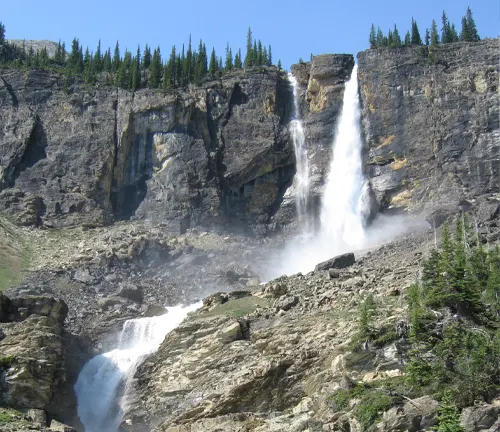
Yoho Lake:
This alpine lake, surrounded by subalpine forests and meadows, provides a peaceful setting for hikers. The clear waters and reflections of the surrounding peaks add to the serene atmosphere.
Kicking Horse Pass:
Serving as a historic and geographical landmark, Kicking Horse Pass offers breathtaking views of the Continental Divide. The pass is a gateway to Yoho National Park, and its vistas are nothing short of awe-inspiring.
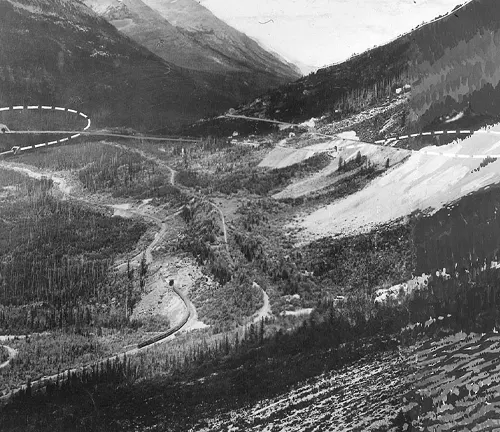
Flora and Fauna
The park’s rich biodiversity is a testament to the delicate balance of ecosystems within its boundaries. Explore the vibrant array of plant and animal species that call Yoho home, from elusive mountain goats to rare alpine flowers.
Flora
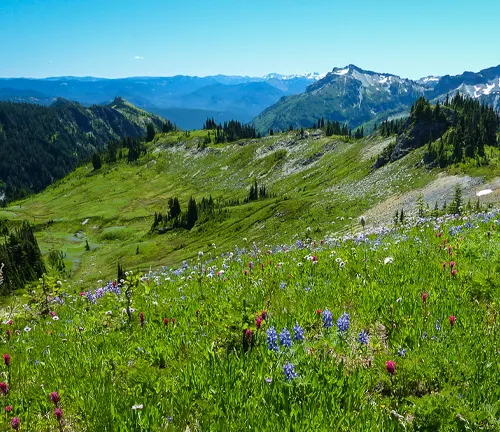
Subalpine and Alpine Wildflowers
Yoho is adorned with a vibrant display of wildflowers, particularly in subalpine and alpine regions. Lupines, Indian paintbrush, and mountain avens add bursts of color to the meadows during the warmer months.
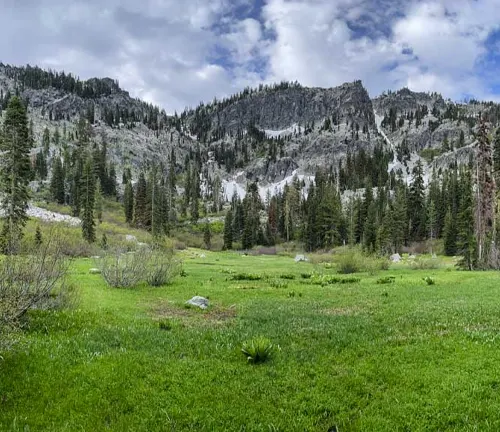
Engelmann Spruce and Subalpine Fir
Coniferous forests in Yoho are dominated by Engelmann spruce and subalpine fir. These evergreen trees contribute to the park’s lush greenery and provide habitat for various wildlife.
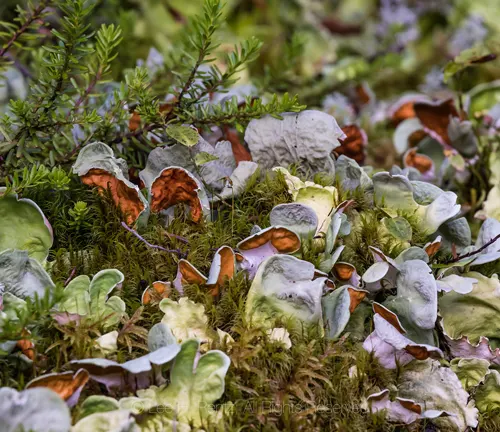
Lichen and Moss
The moist and cool climate of Yoho supports the growth of lichen and moss, covering rocks, trees, and forest floors. These tiny plants play a crucial role in the park’s ecosystems.
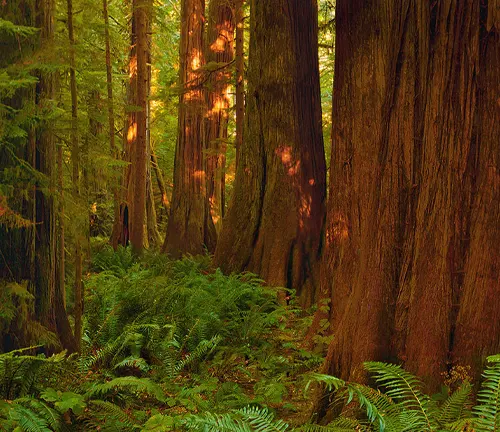
Western Red Cedar
Along riverbanks and wetter areas, Western red cedar stands tall. This resilient tree is well-adapted to the park’s diverse microclimates.
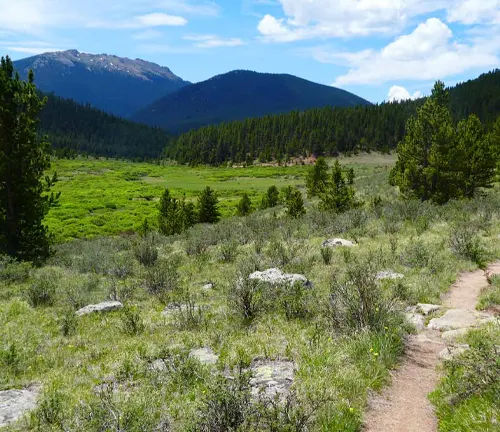
Montane Ecosystem Flora
Lower elevations host a variety of plant life, including Douglas fir, aspen, and thimbleberry. This montane ecosystem showcases the adaptability of flora to different altitudes.
Fauna
Rocky Mountain Big Horn Sheep
Yoho is home to the iconic Rocky Mountain big horn sheep. These impressive mammals are often spotted scaling rocky cliffs and steep terrain.
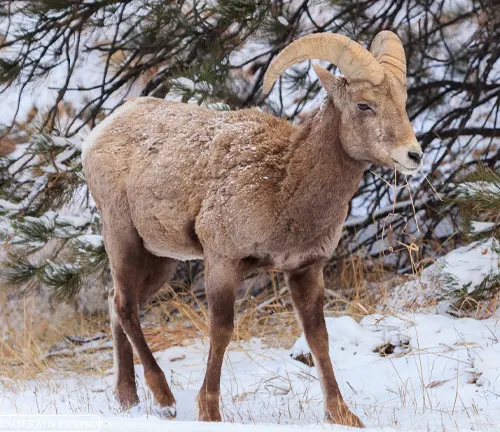
Hoary Marmot
The alpine meadows of Yoho come alive with the presence of hoary marmots. These large, social rodents are known for their distinctive whistles.
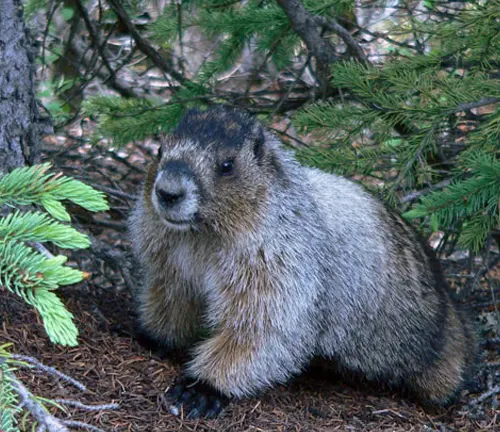
Mountain Goats
Scaling the park’s rugged mountain slopes, mountain goats are a common sight. Their remarkable agility allows them to navigate steep cliffs with ease.

Grizzly Bears and Black Bears
Yoho National Park provides habitat for both grizzly bears and black bears. Visitors should be cautious and follow guidelines to ensure the safety of both humans and bears.

Wolverines
Although elusive and rarely seen, wolverines inhabit Yoho’s remote and wild areas. These solitary creatures are well-adapted to the park’s rugged landscapes.

Columbian Ground Squirrel
Scampering across meadows and rocky outcrops, the Columbian ground squirrel is a common sight in Yoho. These small mammals play a role in the park’s ecosystem.
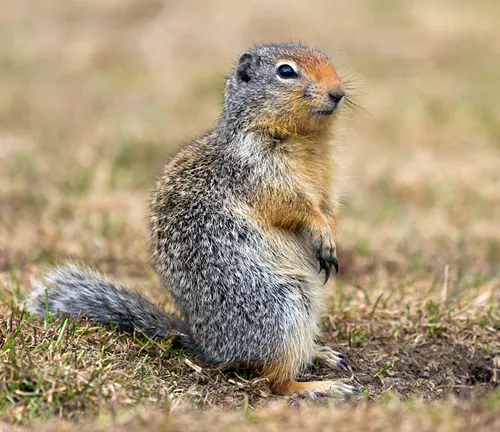
Cutthroat Trout
Yoho’s pristine lakes and rivers are home to cutthroat trout. Anglers are drawn to these waters for the opportunity to catch this native species.
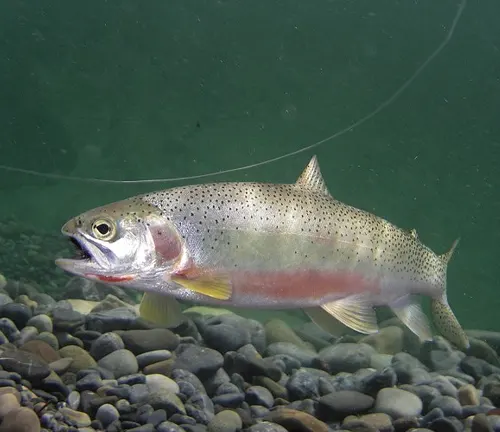
Gray Jays and Clark’s Nutcrackers
Among the bird species in Yoho, gray jays and Clark’s nutcrackers are often spotted. These resilient birds are adapted to the park’s mountainous terrain.
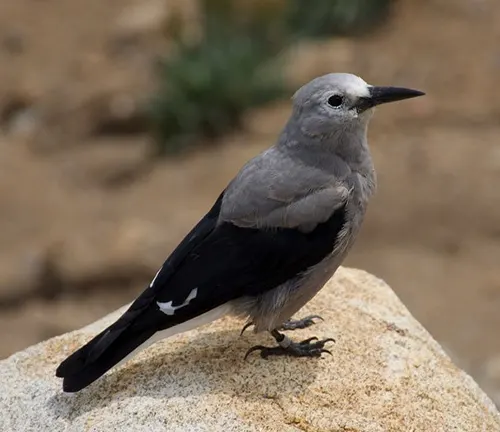
Elk and Deer
Lower elevations support populations of elk and mule deer. Their presence adds to the diversity of herbivores in the park.
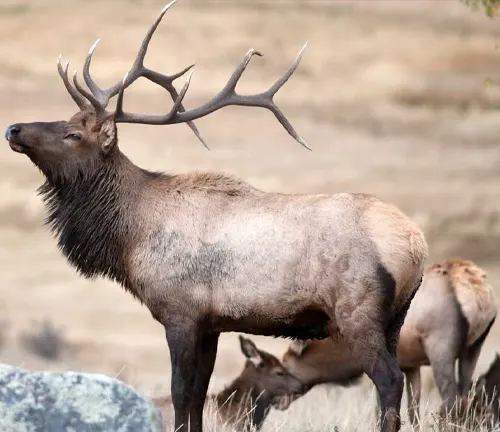
Outdoor Activities
For adventure enthusiasts, Yoho National Park is a playground of possibilities. Whether you’re into hiking, camping, or wildlife watching, the park offers a plethora of outdoor activities to suit all levels of experience.
- Hiking:
Yoho is a hiker’s paradise with a network of trails catering to various skill levels. From easy strolls around Emerald Lake to challenging hikes like the Iceline Trail, the park provides diverse options for every adventurer. - Camping:
Immerse yourself in the tranquility of Yoho by camping under the stars. Several campgrounds offer a rustic experience, allowing you to connect with nature while enjoying the comforts of a campfire. - Wildlife Watching:
Yoho National Park is home to diverse wildlife, including bears, elk, and mountain goats. Bring your binoculars and explore areas like the Yoho Valley to spot these magnificent creatures in their natural habitats. - Rock Climbing:
For thrill-seekers, Yoho offers challenging rock climbing opportunities. The sheer cliffs and rugged terrain provide an ideal playground for climbers looking to test their skills. - Photography Tours:
Capture the park’s breathtaking landscapes and wildlife with a photography tour. Guided tours often take you to the best vantage points, ensuring you don’t miss any of Yoho’s stunning scenes. - Canoeing and Kayaking:
Explore the pristine waters of Yoho’s lakes by canoe or kayak. Paddle across the serene waters of Emerald Lake or Lake O’Hara, surrounded by towering mountains and lush forests. - Fishing:
Fishing enthusiasts can try their luck in Yoho’s lakes and rivers, home to species like cutthroat trout. Ensure you have the necessary permits and follow catch-and-release practices to preserve the park’s delicate ecosystem. - Snowshoeing and Cross-Country Skiing:
In winter, Yoho transforms into a snowy wonderland. Strap on your snowshoes or cross-country skis to explore groomed trails and experience the park’s serene beauty in a different light. - Bird Watching:
Yoho is a birdwatcher’s delight, with species like gray jays and Clark’s nutcrackers making appearances. Bring your bird guidebook and binoculars to identify the park’s avian residents. - Backcountry Skiing:
Venture into Yoho’s backcountry during the winter months for an exhilarating skiing experience. The untouched snow and stunning vistas make it a favorite destination for backcountry enthusiasts. - Guided Tours:
Join a guided tour to enhance your outdoor experience. Knowledgeable guides can provide insights into the park’s history, geology, and wildlife, adding depth to your exploration. - Mountain Biking:
Explore Yoho’s scenic trails on a mountain bike. Some trails are designated for biking, offering an exciting way to cover more ground and witness the park’s beauty from a different perspective. - Stargazing:
Yoho’s dark skies make it an excellent destination for stargazing. On clear nights, marvel at the brilliance of the stars and constellations above, far away from city lights. - Nature Walks:
Take leisurely nature walks around popular spots like the Natural Bridge or Yoho Valley. These short walks provide an opportunity to absorb the park’s natural beauty at a relaxed pace. - Interpretive Programs:
Participate in interpretive programs offered by park staff. These programs provide valuable insights into Yoho’s ecosystems, geology, and cultural history.
Emerald Lake: A Jewel of Yoho
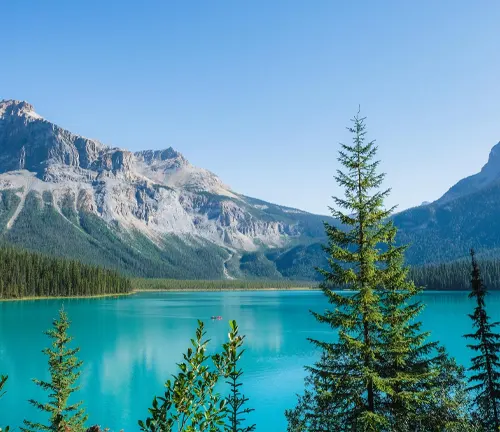
Nestled within the heart of Yoho, Emerald Lake is a pristine gem surrounded by towering peaks. Discover the allure of this breathtaking lake and explore the activities and attractions that make it a must-visit destination.
1. Scenic Beauty:
Nestled amidst towering mountain peaks, Emerald Lake is renowned for its striking emerald-green waters. The lake gets its distinctive color from the glacial rock flour suspended in the water, creating a mesmerizing spectacle.
2. Location:
Situated in the Yoho Valley, Emerald Lake is easily accessible by car, making it a popular stop for visitors exploring the park. The lake is surrounded by the President Range to the south and Wapta Mountain to the north.
3. Recreational Activities:
Emerald Lake offers a range of recreational activities for visitors. From leisurely strolls along the lakeside trail to more challenging hikes, the area caters to all levels of outdoor enthusiasts.
4. Hiking Trails:
The scenic circumference of Emerald Lake features a well-maintained trail, allowing visitors to take a leisurely walk and absorb the breathtaking views. Additionally, more adventurous hikers can explore nearby trails like the Emerald Triangle and the Burgess Shale.
5. Boating:
Visitors can rent canoes or rowboats to paddle across the pristine waters of Emerald Lake. The reflective surface of the lake mirrors the surrounding mountains, providing a unique and picturesque experience.
6. Wildlife Watching:
The shores of Emerald Lake provide opportunities for wildlife sightings. Keep an eye out for birds, such as loons and eagles, and occasionally spot larger mammals like bears and elk in the surrounding forested areas.
7. Historic Emerald Lake Lodge:
Overlooking the lake, the historic Emerald Lake Lodge offers a charming accommodation option. Built-in the early 20th century, the lodge provides a rustic and cozy atmosphere, allowing guests to enjoy the natural surroundings.
8. Winter Wonderland:
In winter, Emerald Lake transforms into a winter wonderland. The frozen lake becomes a natural ice rink, and the surrounding trails are ideal for snowshoeing and cross-country skiing.
9. Photography Opportunities:
Photographers flock to Emerald Lake to capture its beauty in different seasons. The changing colors of the surrounding foliage in autumn, the snow-covered landscapes in winter, and the vibrant blooms in spring make it a year-round photography destination.
10. Quiet Reflection:
Emerald Lake offers a peaceful retreat for those seeking quiet reflection. The calm waters, surrounded by mountains, create a serene atmosphere that encourages visitors to unwind and connect with nature.
Noteworthy Hiking Trails
Embark on a journey through Yoho’s best hiking trails, each offering a unique blend of challenge and scenic beauty. From the Iceline Trail to the iconic Yoho Valley Loop, there’s a trail for every hiker, promising unforgettable views and experiences.
1. Iceline Trail:
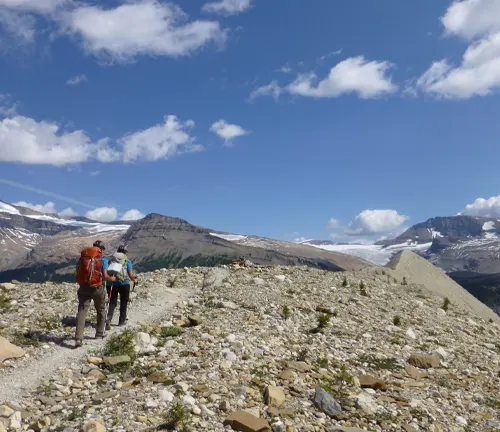
- Difficulty: Challenging
- Embark on a breathtaking journey along the Iceline Trail, which provides unparalleled views of glaciers, waterfalls, and the Yoho Valley. This challenging trail rewards hikers with panoramic vistas of the President Range and Takakkaw Falls.
2. Lake O’Hara Alpine Circuit:
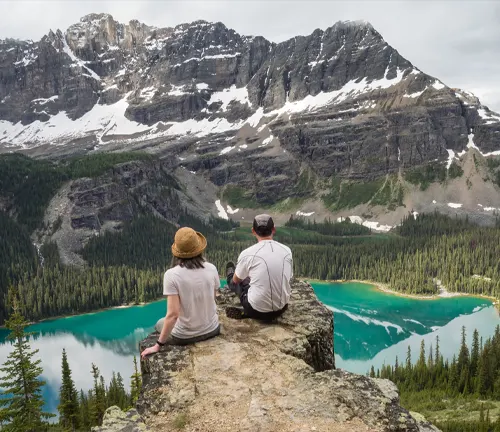
- Difficulty: Moderate to Challenging
- Accessible by a bus ride or a challenging hike, the Lake O’Hara Alpine Circuit takes you through an alpine wonderland. Encounter stunning alpine lakes, meadows adorned with wildflowers, and awe-inspiring views of surrounding peaks.
3. Yoho Valley Loop:

- Difficulty: Moderate
- This loop takes you through the scenic Yoho Valley, offering views of Takakkaw Falls, one of the highest waterfalls in Canada. The trail passes by lush forests, riverbanks, and open meadows, providing diverse scenery.
4. Burgess Shale Fossil Beds Hike:
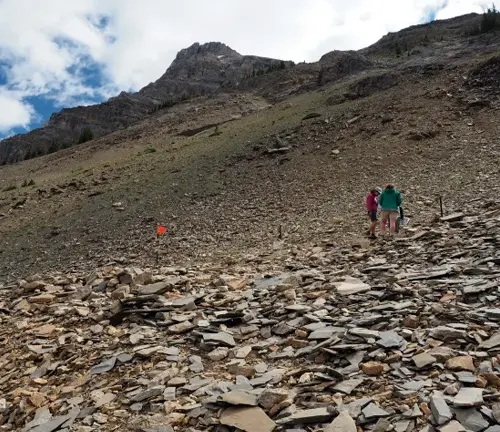
- Difficulty: Challenging
- Delve into the park’s geological history with a hike to the Burgess Shale fossil beds. Led by guided tours, this trail unveils ancient marine fossils, offering a unique and educational hiking experience.
5. Wapta Falls Trail:

- Difficulty: Easy
- Perfect for those seeking a shorter hike, the Wapta Falls Trail leads to the impressive Wapta Falls on the Kicking Horse River. The trail takes you through a forested area, and the reward is a stunning view of the powerful waterfall.
6. Emerald Basin Trail:

- Difficulty: Moderate
- Explore the beauty of Emerald Lake’s surroundings with the Emerald Basin Trail. The hike takes you through lush forests and open meadows, culminating in the stunning views of the surrounding mountains and the turquoise waters of Emerald Lake.
7. Twin Falls Trail:
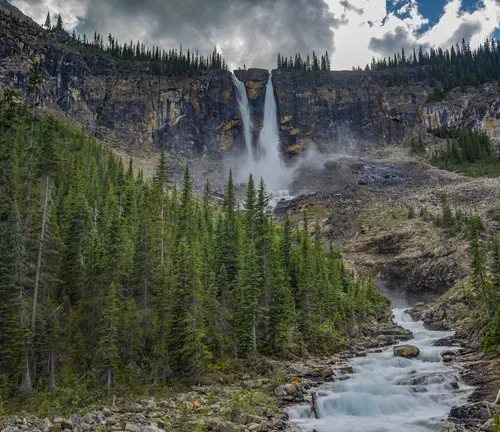
- Difficulty: Moderate
- Venture into Yoho Valley to discover Twin Falls, a spectacular double waterfall. The trail winds through a forested area, offering glimpses of the falls and surrounding scenery.
8. Laughing Falls Trail:
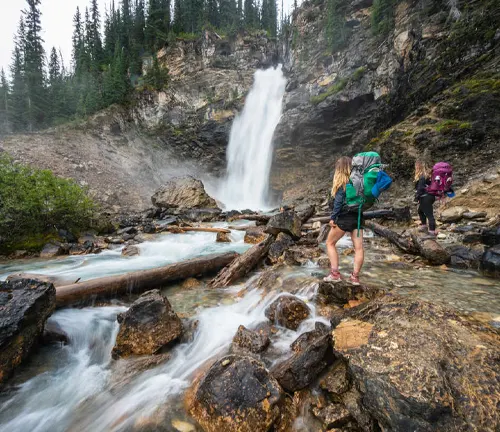
- Difficulty: Easy to Moderate
- A family-friendly trail, Laughing Falls Trail takes you to the charming Laughing Falls. The hike meanders along the Yoho River, providing a pleasant and relatively easy trek for all ages.
9. Hamilton Lake Trail:
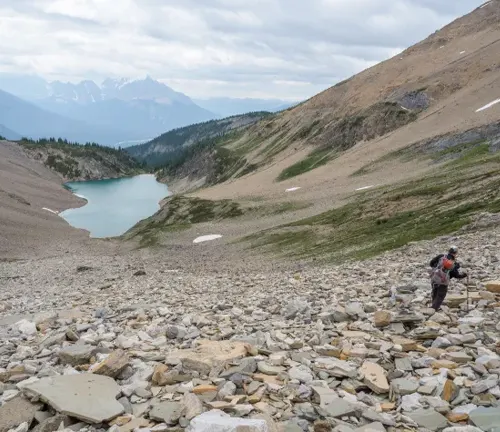
- Difficulty: Challenging
- For experienced hikers seeking a challenge, the Hamilton Lake Trail offers stunning views of the surrounding peaks and the chance to explore an alpine lake nestled in a high-elevation basin.
10. Sherbrooke Lake Trail:
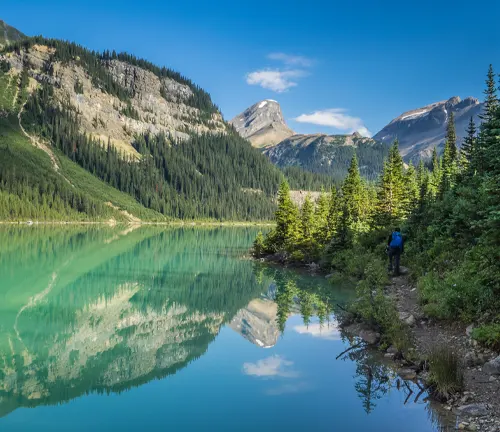
- Difficulty: Easy
- Enjoy a leisurely hike to Sherbrooke Lake, surrounded by the scenic beauty of the Yoho Valley. The trail is relatively easy, making it accessible to hikers of all levels.
Fossil Discoveries
The significant fossil discovery in Yoho National Park is the Burgess Shale, a renowned geological site that has provided invaluable insights into the early history of life on Earth. Discovered in 1909 by paleontologist Charles D. Walcott, the Burgess Shale is a treasure trove of exquisitely preserved fossils from the Middle Cambrian period, approximately 505 million years ago.
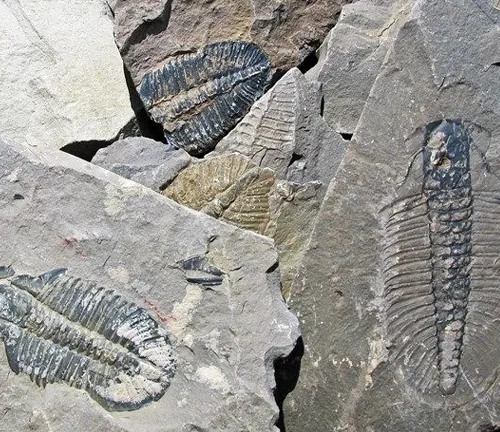
Key Points about the Burgess Shale Fossil Discovery:
- Location:
The Burgess Shale is located in the Canadian Rockies within Yoho National Park. The main fossil-bearing sites are situated on Mount Stephen and Mount Wapta. - Fossil Preservation:
The exceptional preservation of the Burgess Shale fossils is attributed to the unique geological conditions at the time of their formation. The fine-grained mudstone quickly covered and preserved soft-bodied organisms, creating a detailed record of ancient life. - Diversity of Fauna:
The Burgess Shale fossils represent a diverse array of marine organisms, including arthropods, brachiopods, sponges, algae, and the iconic “Opabinia,” a bizarre creature with a unique body plan. - Importance in Evolutionary Biology:
The fossils from the Burgess Shale have played a crucial role in shaping our understanding of the “Cambrian Explosion,” a period when a remarkable diversity of complex life forms emerged relatively quickly in geological terms. This discovery challenged earlier notions about the gradual pace of evolution. - Scientific Significance:
Burgess Shale fossils are exceptionally well-preserved, providing details about soft tissues and anatomical structures that are typically not fossilized. This has allowed scientists to study ancient life forms in unprecedented detail. - Global Recognition:
The Burgess Shale is considered one of the most important fossil sites in the world. Its significance led to the designation of Yoho National Park as a UNESCO World Heritage Site in 1984. - Guided Tours:
Access to the Burgess Shale fossil sites is restricted, and visitors interested in exploring this geological wonder must join guided tours led by knowledgeable interpreters. These tours offer a unique opportunity to witness the fossils in their natural setting. - Ongoing Research:
Scientific research at the Burgess Shale continues to uncover new species and deepen our understanding of early life forms. Advances in technology have allowed researchers to analyze fossils in ways that were not possible in the past.
Conservation Efforts
Yoho National Park is dedicated to the preservation and protection of its diverse ecosystems, wildlife, and cultural heritage. Conservation efforts are vital to ensure the park’s natural beauty endures for future generations. Here are key initiatives and strategies employed for the conservation of Yoho National Park:
1. Ecosystem Management:
Yoho National Park focuses on comprehensive ecosystem management, aiming to maintain the health and balance of its diverse ecosystems. This includes monitoring and managing plant and animal populations, as well as addressing potential threats to biodiversity.
2. Wildlife Protection and Research:
Conservation efforts extend to the protection of wildlife within the park. Ongoing research projects track the movements and behaviors of key species, contributing to informed conservation strategies. Measures are also in place to mitigate human-wildlife conflicts and protect critical habitats.
3. Sustainable Tourism Practices:
Yoho National Park is committed to promoting sustainable tourism practices. This includes carefully managing visitor access to sensitive areas, implementing Leave No Trace principles, and educating visitors about the importance of minimizing their impact on the environment.
4. Community Engagement:
Collaborative efforts with local communities are integral to Yoho’s conservation strategy. Engaging with nearby communities ensures that the local perspective is considered in decision-making processes, fostering a sense of shared responsibility for the park’s well-being.
5. Indigenous Collaboration:
Yoho recognizes the importance of collaborating with Indigenous communities to incorporate traditional knowledge and practices into conservation efforts. Indigenous perspectives contribute to a holistic approach to park management and deepen the understanding of the land’s cultural significance.
6. Invasive Species Management:
Invasive species pose a threat to native flora and fauna. Yoho National Park actively manages and monitors invasive species, implementing control measures to prevent their spread and protect the park’s natural biodiversity.
7. Climate Change Adaptation:
Yoho acknowledges the impacts of climate change on its ecosystems. Conservation efforts include initiatives to monitor climate-related changes, adapt management strategies accordingly, and educate the public about the importance of addressing climate issues.
8. Trail Stewardship:
Yoho places a strong emphasis on responsible trail management. This involves maintaining trails to prevent erosion, protecting sensitive habitats, and ensuring that recreational activities do not harm the park’s natural resources.
9. Environmental Education Programs:
Educating visitors and local communities is a crucial aspect of conservation. Yoho National Park conducts environmental education programs to raise awareness about the park’s ecological importance, fostering a sense of stewardship among those who visit and live nearby.
10. Research Partnerships:
Yoho collaborates with scientific institutions and researchers to conduct studies on various aspects of the park’s ecology. These partnerships contribute valuable data that informs conservation decisions and enhances our understanding of the park’s ecosystems.
11. Restoration Projects:
Yoho undertakes restoration projects to rehabilitate areas impacted by human activities or natural events. This may involve replanting native vegetation, restoring watercourses, and addressing other ecological challenges.
Yoho’s Unique Cultural Heritage
Yoho National Park not only boasts breathtaking natural landscapes but also holds a unique cultural heritage that adds depth to its identity. The park’s cultural history is intertwined with Indigenous connections, the influence of early explorers, and the legacy of those who contributed to its development. Here are key aspects of Yoho’s distinctive cultural heritage:
1. Indigenous Connections:
Yoho National Park is situated within the traditional territories of Indigenous peoples, including the Ktunaxa Nation and Secwepemc. These communities have deep-rooted connections to the land, contributing to the rich tapestry of cultural heritage in the park.
2. Traditional Land Use:
Indigenous peoples have a long history of traditional land use in the area that is now Yoho National Park. Their practices, stories, and knowledge are integral to understanding the landscape and its significance.
3. Naming and Language:
Many of the names within Yoho National Park reflect Indigenous languages. “Yoho” itself is derived from the Indigenous Cree language, expressing awe and wonder. The use of Indigenous names preserves linguistic diversity and acknowledges the cultural heritage of the region.
4. Historic Railway Influence:
Yoho’s cultural heritage is shaped by the construction of the Canadian Pacific Railway in the late 19th century. The railway brought explorers, settlers, and tourists to the area, leaving an indelible mark on the park’s development.
5. Spiral Tunnels:
The construction of the Spiral Tunnels, completed in the early 20th century, is a testament to engineering ingenuity. The tunnels allowed trains to navigate the challenging Kicking Horse Pass, leaving a lasting mark on Yoho’s cultural and transportation history.
6. Early Explorers and Mountaineers:
Yoho attracted early explorers and mountaineers eager to uncover its natural wonders. Their accounts and expeditions contributed to the park’s recognition and laid the foundation for its appreciation as a destination for outdoor enthusiasts.
7. Burgess Shale Discovery:
The Burgess Shale fossil beds, discovered in 1909 by Charles D. Walcott, are a globally significant paleontological site within Yoho. This discovery not only impacted scientific understanding but also added a cultural layer to the park’s identity, drawing researchers and enthusiasts from around the world.
8. Indigenous Cultural Significance:
Yoho National Park recognizes the cultural significance of the land for Indigenous peoples. Collaborative efforts involve engaging with Indigenous communities to incorporate their perspectives into park management and to promote cultural understanding.
9. Historic Architecture:
Historic structures within the park, such as the Emerald Lake Lodge, stand as reminders of the park’s cultural history. These structures contribute to the park’s unique character and offer a glimpse into the past.
10. Cultural Interpretation Programs:
Yoho National Park provides cultural interpretation programs that delve into the history, stories, and traditions associated with the park. These programs offer visitors a deeper appreciation for the cultural heritage embedded in the landscape.
Practical Visitor Information
1. Park Location:
Yoho National Park is located in the Canadian Rockies, spanning across British Columbia and Alberta. It is adjacent to Banff National Park to the east and Kootenay National Park to the south.
2. Entrance Fees:
Parks Canada charges entrance fees for Yoho National Park. Visitors can purchase passes online or at park entrances. Fee details, including annual passes and group rates, can be found on the official Parks Canada website.
3. Visitor Centers:
The park has visitor centers, including the Yoho Visitor Centre in Field, British Columbia. These centers provide information, maps, exhibits, and friendly staff to assist with trip planning.
4. Accommodations:
Accommodation options within the park range from campgrounds to lodges. Popular choices include the historic Emerald Lake Lodge and campgrounds like Kicking Horse Campground. Reservations are recommended, especially during peak seasons.
5. Camping:
Yoho offers both front-country and backcountry camping. Front-country campgrounds, like Kicking Horse, have facilities, while backcountry camping requires permits and adherence to Leave No Trace principles. Reservations are recommended for popular sites.
6. Weather:
Yoho experiences mountain weather with potential changes throughout the day. Summers are generally mild, but temperatures can drop, especially at higher elevations. Winter brings snow, and conditions can be challenging. Dress in layers and be prepared for variable weather.
7. Hiking and Trail Information:
Yoho National Park offers a variety of hiking trails. Check trail conditions, difficulty levels, and bear activity before embarking on a hike. Guided tours, including those to the Burgess Shale, are available and provide informative experiences.
8. Wildlife Safety:
Yoho is home to diverse wildlife. Practice wildlife safety by keeping a safe distance, storing food securely, and being aware of your surroundings. Carry bear spray, make noise on the trails, and follow Parks Canada guidelines for wildlife encounters.
9. Road Conditions:
Roads within Yoho National Park are generally well-maintained. However, road conditions can change, especially in winter. Check for updates on road closures and conditions before your trip.
10. Visitor Etiquette:
Respect park rules and guidelines. Stay on designated trails, follow Leave No Trace principles, and avoid disturbing wildlife. Responsible visitor behavior helps preserve the park for future generations.
11. Services and Amenities:
Limited services are available within the park, so come prepared with essentials. Fuel stations, dining options, and other services can be found in nearby communities like Field and Lake Louise.
12. Park Events and Programs:
Check for special events, interpretive programs, and ranger-led activities during your visit. These programs provide insights into the park’s ecology, history, and cultural heritage.
13. Connectivity:
Mobile phone reception may be limited in some areas of the park. Plan accordingly and let someone know your plans if you’re venturing into the backcountry.
14. Leave No Trace:
Practice Leave No Trace principles to minimize your environmental impact. Pack out all waste, stay on designated trails, and respect the natural surroundings.
Weather and Climate
Yoho National Park, nestled in the heart of the Canadian Rockies, experiences a diverse climate shaped by its mountainous terrain. Understanding the weather patterns is crucial for planning a visit, as conditions can vary throughout the year. Here’s an overview of the weather and climate in Yoho National Park:
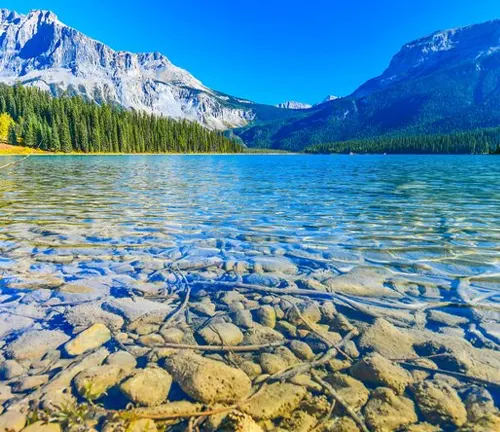
Summer (June to August)
Temperature: Summer in Yoho brings milder temperatures, with daytime highs ranging from 15°C to 25°C (59°F to 77°F). However, temperatures can drop significantly at higher elevations, so layered clothing is advisable.
Precipitation: Summer is the driest season, but occasional rain showers can occur. It’s essential to be prepared for sudden weather changes, especially in the mountainous terrain.
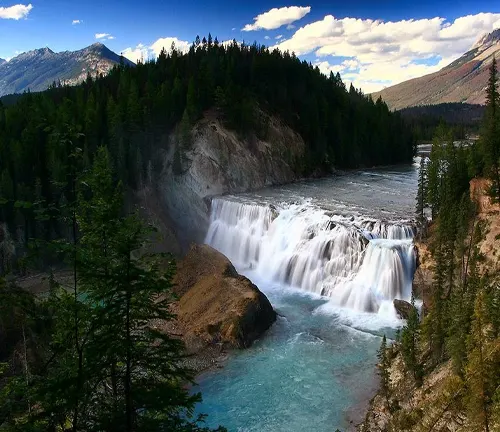
Fall (September to November)
Temperature: Fall temperatures begin to cool, ranging from 5°C to 15°C (41°F to 59°F). As the season progresses, temperatures can drop further, leading to chilly evenings.
Fall Colors: The park transforms into a canvas of vibrant fall colors, with golden larch trees and changing foliage creating a picturesque landscape.
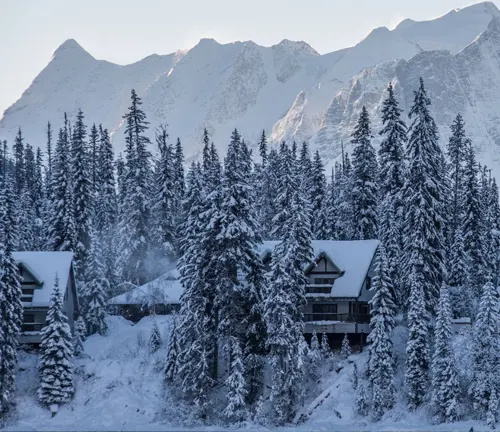
Winter (December to February):
Temperature: Winter in Yoho brings cold temperatures, with daytime highs ranging from -5°C to 5°C (23°F to 41°F). Nighttime temperatures can drop significantly, often below freezing.
Snowfall: Yoho is blanketed in snow during winter, creating a winter wonderland. Snowfall is common, especially at higher elevations, making it a popular destination for winter sports enthusiasts.
Spring (March to May):
Temperature: Spring temperatures gradually rise, ranging from 0°C to 10°C (32°F to 50°F). As snow melts, lower elevations may experience milder conditions, while higher elevations remain cooler.
Wildlife Awakening: Spring marks the awakening of wildlife, with the park’s inhabitants becoming more active. It’s a great time for wildlife enthusiasts to spot animals in their natural habitats.
Mountainous Terrain Impact:
Yoho’s mountainous terrain contributes to microclimates, with weather conditions changing rapidly as you ascend or descend. Be prepared for temperature variations, especially if exploring higher elevations.
Weather Preparedness:
Regardless of the season, weather conditions can change unexpectedly in Yoho National Park. Visitors should be prepared for rain, snow, and temperature fluctuations. Dress in layers, carry waterproof gear, and check weather forecasts before venturing into the park.
Avalanche Safety:
In winter, avalanche risk is a consideration for those exploring backcountry areas. Avalanche safety training and equipment are recommended for those engaging in winter sports.
High Altitude Considerations:
Yoho National Park’s higher elevations may pose challenges for some visitors, such as altitude sickness. Stay hydrated, acclimatize gradually, and be mindful of your physical well-being.
Road Conditions:
Road conditions, especially at higher elevations, can be impacted by snow and ice in winter. Check road conditions before traveling and be prepared for winter driving conditions.
Unexplored Corners
While Yoho National Park is celebrated for its iconic attractions like Emerald Lake and Takakkaw Falls, it also harbors hidden gems and unexplored corners that promise solitude and a deeper connection with nature. Here are some lesser-known spots waiting to be discovered in Yoho:
Yoho Lake
Tucked away from the bustling crowds, Yoho Lake offers a serene escape. Accessible via a trail from the Iceline or Little Yoho Valley, this alpine lake is surrounded by rugged peaks, providing a peaceful setting for reflection.
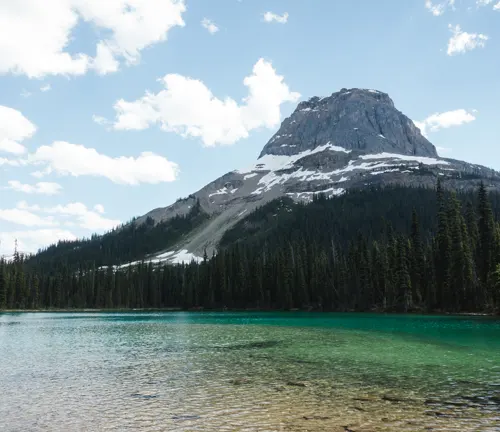
Kiwa Trail
Off the beaten path, the Kiwa Trail offers a more secluded hiking experience. The trail meanders through dense forests, leading to a tranquil lake and offering glimpses of the surrounding mountain vistas.
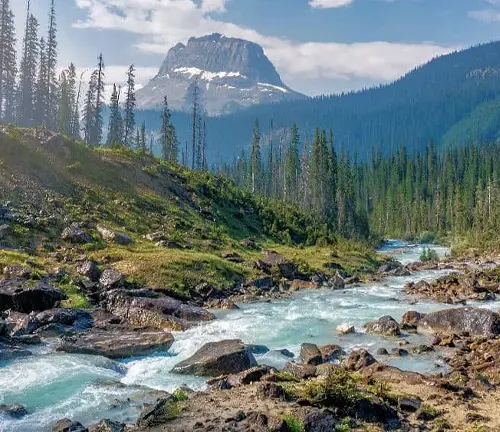
Hidden Falls
For those willing to explore, Hidden Falls remains a well-kept secret. Located off the Yoho Valley Road, a short hike unveils this cascading waterfall surrounded by lush greenery, providing a refreshing escape.
Sherbrooke Creek
Follow the trail along Sherbrooke Creek for a peaceful walk through old-growth forests. The creek’s gentle flow and the sounds of nature create a tranquil atmosphere away from the busier parts of the park.
Isolated Passes
Venture into the isolated passes of Yoho, such as McArthur Pass or Whaleback. These less-frequented routes offer solitude and breathtaking views, providing a sense of discovery for those seeking off-the-beaten-path experiences.
Larix Lake
A hidden gem within the alpine, Larix Lake is accessible from the Lake O’Hara region. Surrounded by subalpine meadows and the stunning landscapes of the Odaray Plateau, it’s a serene spot often overlooked by many visitors.
Little Yoho Valley
While the Iceline Trail is popular, the adjacent Little Yoho Valley remains a relatively unexplored area. Hike along the valley to discover pristine meadows, the charming Twin Falls, and a quieter side of Yoho.

Des Poilus Glacier
For those with mountaineering skills, the Des Poilus Glacier offers a challenging adventure. Accessible through the Little Yoho Valley, this unexplored corner rewards skilled mountaineers with breathtaking glacial landscapes.
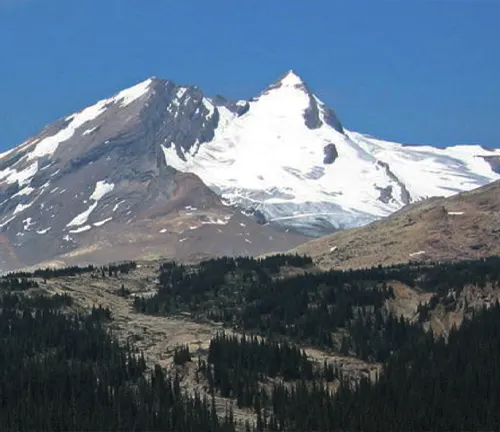
Emerald Basin’s Upper Reaches
Beyond the well-trodden trails around Emerald Lake, explore the upper reaches of Emerald Basin. This less-visited area offers stunning views of the surrounding peaks and a more secluded experience.
Takkakaw Falls Viewpoint
While Takkakaw Falls is a popular attraction, the viewpoint from Yoho Valley Road is often overlooked. Experience the falls from a unique perspective with fewer crowds, especially during the quieter seasons.
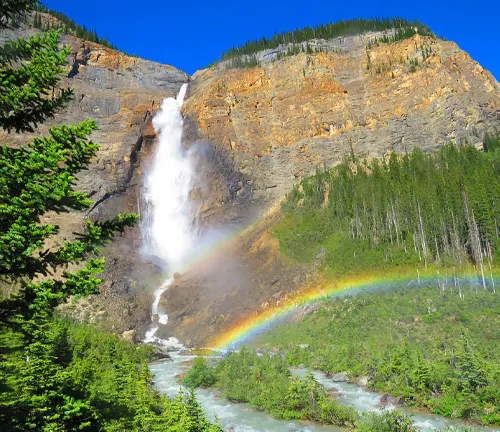
Celeste Lake
Accessed via the Little Yoho Valley, Celeste Lake is a hidden gem surrounded by high alpine meadows. The challenging trail and solitude make it a rewarding destination for experienced hikers.
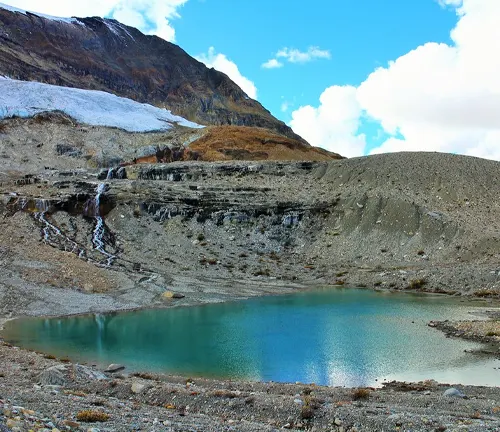
Niles Meadow
Explore the tranquility of Niles Meadow, nestled in the quieter areas of Yoho National Park. The meadow offers a picturesque setting with wildflowers, providing a peaceful escape.
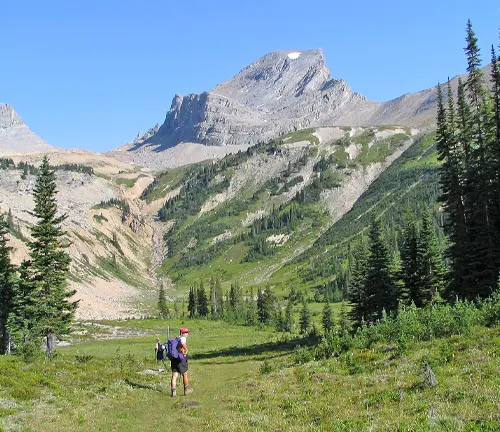
Conclusion
As we conclude our journey through Yoho National Park, the allure of its natural wonders lingers. We invite you to experience the park’s charm firsthand, immersing yourself in its breathtaking landscapes and embracing the spirit of adventure it offers.
Frequently Asked Questions (FAQs)
When is the best time to visit Yoho National Park?
The ideal time to visit Yoho is during the summer months, from June to September, when the weather is most favorable for outdoor activities.
Are there camping facilities within the park?
Yes, Yoho National Park offers various campgrounds for both tent and RV camping. Be sure to check availability and make reservations in advance.
Can I bring my pet to Yoho National Park?
While pets are allowed in certain areas of the park, it’s essential to check the specific regulations and ensure a pet-friendly accommodation if needed.
Are there guided tours available in the park?
Yes, there are guided tours available for those who prefer a more in-depth exploration. Check with park authorities or tour operators for options.
What safety precautions should I take while hiking in Yoho?
It’s crucial to be prepared for varying weather conditions, carry essential supplies, and inform someone about your hiking plans. Follow trail markers and guidelines for a safe experience.



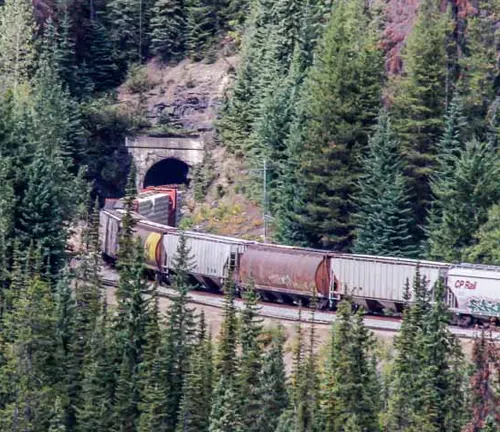



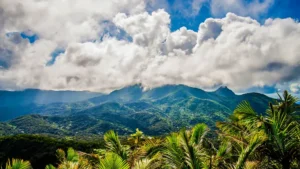
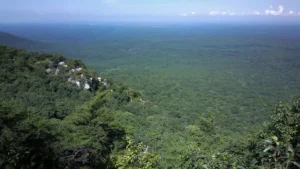
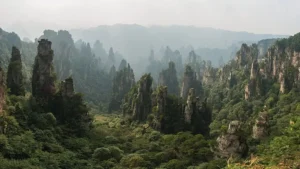

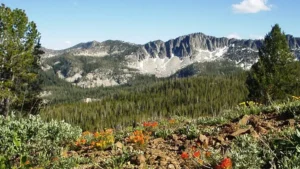


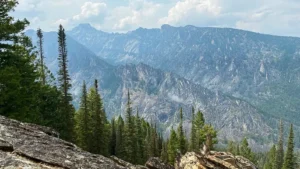
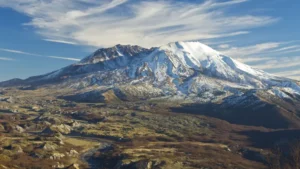

Leave your comment